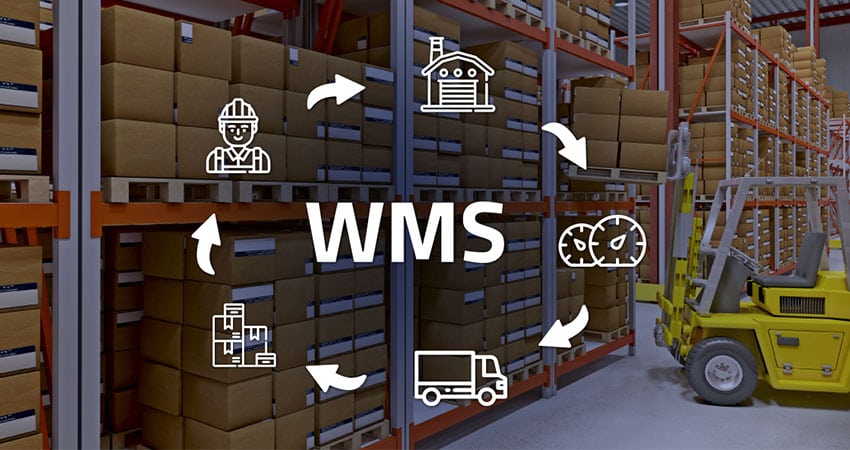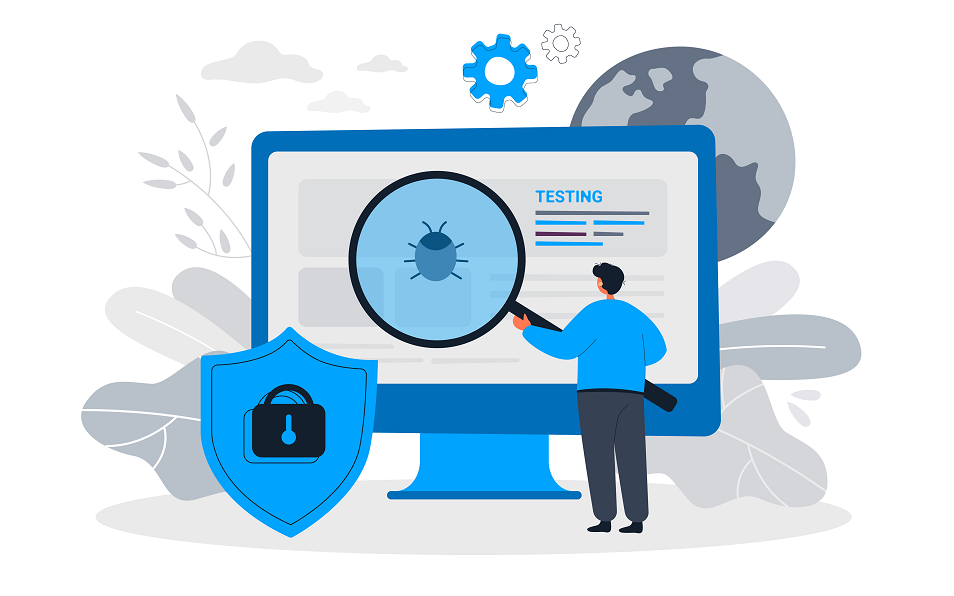Implementing a Warehouse Management System (WMS) is a significant step toward streamlining your business operations. If you’re looking to boost efficiency and maintain a competitive edge, a well-executed WMS can be a game-changer. But where do you start, and how do you ensure success?
In our step-by-step WMS Implementation Guide, you’ll find simple, actionable tips to help you navigate this critical process. From planning and preparation to execution and assessment, we’ll cover every aspect to ensure a smooth transition. This guide is designed to help you avoid common pitfalls and achieve measurable improvements in your warehouse management. Let’s get started!
Understanding WMS and Its Benefits
So, you’re thinking about implementing a Warehouse Management System (WMS) for your business. Good choice! Understanding what WMS is and the benefits it can offer is a great place to start. Let’s break it down.
What is a Warehouse Management System?
A Warehouse Management System, commonly known as WMS, is software designed to optimize and manage the day-to-day operations of a warehouse. It handles everything from inventory tracking to order fulfillment, making sure that goods move through your warehouse efficiently.
The history of WMS goes back to the 1970s when companies first started using simple computer systems to manage inventory. Over the years, these systems evolved, incorporating more advanced features like real-time data and automated workflows. Today, a modern WMS is an essential tool for businesses of all sizes, helping them streamline operations and enhance productivity.
Key Benefits of Implementing a WMS
Why should you consider a WMS for your business? Here are some of the main benefits:
Increased Efficiency
A WMS automates many manual tasks, reducing the time and effort it takes to complete them. From receiving goods to shipping orders, everything becomes smoother and faster. Imagine having a well-oiled machine that takes care of the nitty-gritty details, so you can focus on the bigger picture.
Improved Inventory Accuracy
Keeping track of inventory can be a headache, especially if you’re doing it manually. A WMS provides real-time updates on stock levels, ensuring that you always know what you have on hand. This means fewer errors and less guesswork. No more searching through stacks of paperwork or spreadsheets!
Better Customer Service
When your warehouse runs efficiently, your customers reap the benefits too. Faster order processing and accurate inventory levels mean you can meet customer demands more effectively. Happy customers are more likely to become repeat customers, and who doesn’t want that?
In summary, implementing a WMS can make your operations more efficient, accurate, and customer-friendly. It’s like having a backstage pass to making your warehouse operations as smooth as possible.
Stay tuned as we continue our guide to cover more details on how to implement this powerful system in your own warehouse.
Planning for WMS Implementation
Careful planning is essential to ensure a successful WMS (Warehouse Management System) implementation. Let’s walk through the key steps to get you started on the right foot.
Assessing Business Needs
Before diving into the WMS implementation process, it’s crucial to understand what your business truly needs. Start by asking yourself a few fundamental questions:
- What are the current challenges in your warehouse management?
- How do these challenges impact your overall business performance?
- Which specific areas need improvement?
Consider conducting a thorough audit of your warehouse operations. Compare your processes with industry best practices and note where you fall short. Engaging your team can provide valuable insights as they are often the most aware of daily inefficiencies.
List out your requirements in a detailed document. This should cover:
- Inventory Management: Track inventory levels accurately to avoid stock-outs or overstock situations.
- Order Fulfillment: Speed up order processing times and ensure accuracy.
- Shipping and Receiving: Streamline processes to reduce errors and delays.
- Reporting and Analytics: Gain insights to make data-driven decisions.
By thoroughly assessing your business needs, you can determine the scope of your WMS project and set the stage for a successful implementation.
Setting Clear Objectives
Setting clear and measurable objectives is vital for guiding your WMS implementation. Without defined goals, it’s easy to lose focus and direction. Objectives help you stay on track and measure success along the way.
Here are some examples of objectives you might set:
- Reduce Order Processing Time: Aim to cut down the time it takes from order receipt to shipment by a specific percentage.
- Improve Inventory Accuracy: Set a target for accuracy in inventory counts to minimize discrepancies.
- Enhance Customer Satisfaction: Focus on improving order accuracy and delivery times to boost customer satisfaction.
SMART goals—Specific, Measurable, Achievable, Relevant, and Time-bound—are especially effective. For instance, instead of a vague goal like “improve efficiency,” set a goal like “reduce order processing time by 20% within six months.”
Having these objectives in place will provide a clear roadmap for your WMS implementation and help you assess progress as you move forward.
Choosing the Right WMS Solution
Selecting a WMS solution that aligns with your business needs is crucial. With so many options available, making the right choice can seem daunting. Here are some tips to guide you:
- Understand Your Requirements: Ensure the WMS solution can meet all the needs you identified in the assessment phase.
- Scalability: Choose a system that can grow with your business. This will save you the hassle and cost of switching systems as your operations expand.
- User-Friendly Interface: A system that’s easy for your team to use will help with smooth adoption and reduce the learning curve.
- Integration Capabilities: Make sure the WMS can integrate seamlessly with your existing systems, such as ERP and e-commerce platforms.
- Vendor Support: Select a vendor known for excellent support and training services. This can be a game-changer during the implementation phase.
It’s also helpful to ask for demos and trial periods. Let your team test the system to see if it fits well with your workflow. Reading customer reviews and case studies can also offer insights into the system’s performance and reliability.
By carefully choosing the right WMS solution, you can ensure it meets your needs and supports your business’s growth and efficiency goals.
Designing the Implementation Plan
Creating an effective implementation plan is a critical step in rolling out your Warehouse Management System (WMS). A solid plan helps ensure that every aspect of the implementation is organized and runs smoothly. Here’s how to design a robust implementation plan for your WMS.
Developing a Project Timeline
Setting a realistic timeline for your WMS implementation is crucial. An effective timeline acts like a roadmap, guiding your team through each phase of the process. Here’s how to develop one:
- Define Key Milestones: Start by identifying major milestones in your implementation journey. These might include initial planning, software installation, pilot testing, and full deployment.
- Break Down Tasks: Divide the project into smaller tasks. This makes it easier to manage and track progress. Be sure to include all necessary steps such as data migration, user training, and system configuration.
- Set Realistic Deadlines: Assign deadlines to each task. Be realistic about the time needed to complete them. Factor in potential delays and allow some buffer time to handle unexpected issues.
- Allocate Resources: Ensure you have the necessary resources at each stage of the timeline, including staff, budget, and equipment.
Developing a project timeline helps keep everyone on track and ensures that the implementation progresses smoothly without unnecessary delays.
Assigning Roles and Responsibilities
Clearly defining roles and responsibilities for the project team is essential. When everyone knows their tasks, the implementation process becomes more efficient and organized. Here’s how to assign roles:
- Project Manager: Appoint a project manager to oversee the implementation. This person will coordinate efforts, monitor progress, and address any issues that arise.
- Team Members: Identify the key team members who will be involved in the project. This might include IT staff, warehouse managers, and operational staff.
- Define Responsibilities: Clearly state what each team member is responsible for. For example, IT staff may handle system setup, while warehouse managers focus on procedure changes.
- Set Accountability: Assign tasks with clear expectations and deadlines. Make sure everyone understands their role and how it contributes to the overall success of the implementation.
By assigning roles and responsibilities, you create a structured environment where each team member knows their part, helping to ensure a successful WMS implementation.
Budgeting for Implementation
Budgeting for your WMS implementation is a critical part of your planning process. A well-thought-out budget can prevent unexpected costs and financial strain. Here’s how to create an effective budget:
- Software Costs: Start with the cost of the WMS software itself. This may include license fees, subscription costs, or one-time payments.
- Hardware Costs: Factor in any hardware needed for the implementation, such as servers, barcode scanners, and mobile devices.
- Consulting and Training: Include costs for hiring consultants to help with implementation and training staff to use the new system.
- Data Migration: Transferring data from old systems to the new WMS.
- System Downtime: Potential loss of productivity during the transition period.
- Maintenance and Support: Ongoing costs for system maintenance and technical support.
To ensure you have enough funds for the entire process, it’s wise to add a contingency amount to your budget. This will cover any unforeseen expenses that might arise during implementation.
Designing a comprehensive implementation plan for your WMS will help you stay organized, meet deadlines, and keep your project within budget.
Executing the WMS Implementation
After thorough planning, it’s time to bring your Warehouse Management System (WMS) to life. This phase involves critical steps like data migration, system integration, configuration, and staff training. Let’s walk through how to execute each of these steps effectively.
Data Migration and System Integration
Migrating your existing data to the new system and integrating the WMS with other business systems are essential steps in a WMS implementation. Accurate data and seamless integration ensure that your operations run smoothly from day one.
Data Migration
Moving your old data to the new WMS can be like transporting a library of books to a new location. You need to ensure everything is in the right place. Here’s how to do it:
- Clean Up Your Data: Before you start migrating, clean up your current data. Remove outdated or incorrect information.
- Map Data Fields: Align data fields in your existing system with those in the new WMS to ensure data consistency.
- Test Migration: Conduct a test migration to identify potential issues. Test a small portion of your data to see how it transfers to the new system.
- Complete Migration: Once the test migration is successful, proceed with full data migration. Monitor the process closely to address any hiccups.
System Integration
Integrating the WMS with other systems like ERP, CRM, or e-commerce platforms ensures seamless operations. Think of it like connecting pieces of a puzzle:
- Identify Integration Points: Determine which systems need to be integrated with the WMS.
- Use APIs and Middleware: APIs (Application Programming Interfaces) and middleware can help connect the WMS to other systems. They act like translators, ensuring data flows smoothly between systems.
- Conduct End-to-End Testing: Test the integration thoroughly to make sure all systems communicate effectively. Fix any issues that arise during testing.
- Monitor and Support: After integration, keep an eye on system performance. Provide support to address any integration-related issues promptly.
System Configuration and Customization
Configuring and customizing the WMS to fit your business processes is like tailoring a suit. It needs to fit perfectly to be effective.
System Configuration
Setting up the system involves configuring various parameters to align with your operational needs:
- Define User Roles: Set up user roles and permissions to control access to different parts of the system.
- Establish Workflows: Configure workflows that match your current processes. This could include order picking, packing, and shipping.
- Set Up Alerts and Notifications: Establish alerts for important events, like low stock levels, to keep operations running smoothly.
Customization
Customization goes beyond basic configuration, allowing you to add unique features or tweaks:
- Custom Reports: Develop reports that provide insights specific to your business needs.
- Tailored Dashboards: Create dashboards that display key metrics and information at a glance.
- Additional Features: Work with the WMS vendor to add any additional features you need, such as integration with specialized equipment.
Training and Support
Just as you wouldn’t give someone a new tool without showing them how to use it, training your staff is crucial to the success of your WMS implementation. Providing ongoing support ensures the system is used effectively.
Training
Training ensures that your team knows how to use the new system and understands its benefits:
- Create a Training Plan: Develop a comprehensive training plan that covers all aspects of the WMS.
- Hands-On Training: Provide hands-on training sessions where staff can practice using the system in a controlled environment.
- User Manuals and Guides: Supply detailed user manuals and guides for reference.
Ongoing Support
Support doesn’t end after training. Continuous support helps address any issues that arise and keeps your team confident in using the WMS:
- Help Desk: Set up a help desk for staff to report issues and get assistance.
- Regular Check-Ins: Schedule regular check-ins to gather feedback and address any concerns.
- System Updates: Keep the system updated with the latest features and improvements to maintain efficiency.
In this phase, the combination of proper data migration, system configuration, training, and ongoing support sets the stage for a successful WMS implementation.
Testing and Quality Assurance
Implementing a Warehouse Management System (WMS) isn’t just about turning it on and hoping for the best. Proper testing and quality assurance are essential to ensure the system performs as expected. This section will cover two critical aspects of this process: conducting system tests and User Acceptance Testing (UAT).
Conducting System Tests
Before you can fully rely on your WMS, it’s crucial to perform various tests to verify its functionality and performance. Think of this step as making sure your car is ready for a long road trip; you wouldn’t want to hit the highway without checking the engine first.
Key Steps to Conduct System Tests:
- Unit Testing: Test individual components of the WMS to ensure they work correctly. This might include checking data entry fields, algorithms, and other basic functionalities.
- Integration Testing: Once individual units are tested, it’s time to see how they work together. Integration testing checks if different components of the WMS interact smoothly without errors.
- Performance Testing: This type of testing examines the system’s performance under various conditions. How does the WMS handle high volumes of data or simultaneous users? Benchmark it under different scenarios to identify any lags or crashes.
- Security Testing: Security is paramount. Conduct tests to identify vulnerabilities and make sure that data is protected against unauthorized access.
- End-to-End Testing: Simulate the entire workflow from start to finish – from receiving an order to shipping it out. This ensures every step is functioning as expected within the system.
Run these tests in a controlled environment, and closely monitor the results. Any issues identified should be promptly addressed. Think of it as tuning an instrument; only when it’s perfectly in sync can you expect harmonious performance.
User Acceptance Testing (UAT)
User Acceptance Testing (UAT) is perhaps the most critical part of ensuring your WMS meets the required standards. This is where the rubber meets the road – where real users get their hands on the system to see if it works for them.
Steps to Conduct UAT:
- Select a Team of Testers: Choose a group of users who will use the WMS in their daily tasks. Select people from different departments to get a variety of perspectives.
- Create Test Scenarios: Develop realistic scenarios that users will encounter. These should cover typical operations and any edge cases that may arise.
- Training the Testers: Provide brief training sessions to make sure testers understand how to use the WMS. This ensures they can focus on system functionality rather than figuring out how to navigate it.
- Execute the Tests: Let your team run through the test scenarios. Encourage them to note any issues, no matter how small. It’s like taking a new phone for a spin; you want to know if there are any quirks before committing.
- Collect Feedback: Gather detailed feedback from the users. What worked well? What was confusing? Were there any features they found particularly useful or frustrating?
- Make Necessary Adjustments: Use this feedback to make adjustments and improvements. Address any bugs, enhance features, and refine the system based on user input.
UAT not only helps to identify any last-minute issues but also ensures that your users are comfortable and confident with the new system. It’s like getting the seal of approval from the people who will use it most directly.
By thoroughly testing your WMS through systematic checks and involving end-users in the process, you can ensure that your system is ready for prime time. Think of it as the final quality check before rolling out a new product – every flaw caught and fixed here saves potential headaches down the line.
Go-Live and Post-Implementation Support
The go-live phase of your WMS implementation is a major milestone. It’s the moment when all your planning, testing, and hard work come together. After going live, ongoing support ensures everything runs smoothly. Here’s how to handle both.
Preparing for Go-Live
Before your Warehouse Management System officially goes live, you need to make sure everything is ready. Think of go-live like launching a rocket: every detail must be perfect to ensure a successful launch.
Key Steps to Prepare for Go-Live:
- Final Data Migration: Ensure all data is accurately transferred to the new WMS. This includes inventory levels, order histories, and supplier details. Double-check for any discrepancies.
- User Training: Conduct refresher training sessions to ensure all users are comfortable with the new system. Hands-on practice and Q&A sessions can help solidify their understanding.
- System Setup: Verify that the WMS is configured correctly. This includes user roles, access permissions, and workflow settings.
- Backup Plans: Have a contingency plan in place. This includes having technical support on standby and a rollback strategy if things don’t go as planned.
- Communication: Inform all stakeholders about the go-live date and what to expect. Clear communication helps manage expectations and reduces anxiety.
Monitoring and Troubleshooting
Once the WMS is live, monitoring its performance and troubleshooting any issues is crucial. Think of it as a pilot navigating a plane; constant checks ensure a smooth flight.
Monitoring WMS Performance:
- Establish KPIs: Define key performance indicators (KPIs) to monitor. These might include order processing time, inventory accuracy, and system uptime.
- Regular Checks: Schedule regular checks to monitor these KPIs. Use dashboards and reports to keep an eye on performance metrics.
- User Feedback: Encourage users to report any issues or bugs they encounter. Their feedback is invaluable for identifying problems early.
Troubleshooting Issues:
- Identify Common Problems: Have a list of common issues and their solutions ready. This can include login problems, data discrepancies, or slow system performance.
- Quick Response Team: Set up a dedicated team to handle troubleshooting. Quick responses minimize downtime and keep operations running smoothly.
- Document Solutions: Keep a record of issues and their resolutions. This documentation helps solve repeat problems faster and trains new support personnel.
Post-Implementation Activities:
- Continuous Training: Provide ongoing training sessions. This helps users stay updated on new features and best practices.
- System Updates: Regularly update the WMS to improve performance and security. Keep an eye on updates from your WMS vendor.
- Performance Reviews: Periodically review the system’s performance. Use collected data to make informed decisions about optimizations or changes.
By preparing thoroughly for go-live and maintaining diligent monitoring and support, you can ensure your WMS implementation is a success. This proactive approach helps you catch and resolve issues early, keeping your warehouse operations running smoothly.
Conclusion
A successful WMS Implementation Guide is essential for streamlining warehouse operations and boosting efficiency. From understanding the benefits of a WMS to choosing the right solution and executing detailed plans, every step matters.
Effective planning, clear objectives, and thorough testing are key. Proper training and ongoing support ensure users can effectively manage the system. Monitoring performance and troubleshooting issues help maintain smooth operations.
Investing in a well-planned WMS implementation pays off in improved accuracy, faster order processing, and better customer service. This guide serves as your roadmap to achieving these benefits.



